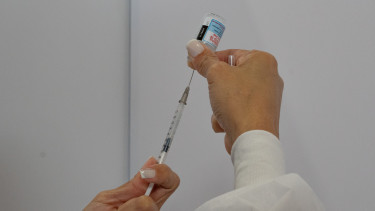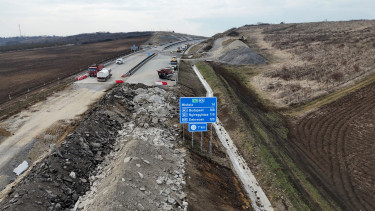Hungary might face new wave in pandemic despite high vaccination rate

Chile was a poster country for COVID-19 vaccine procurement and inoculation. By the spring of 2021, the South American country had vaccinated a much higher share of its population than the world average. The high vaccination coverage owed to the country's rapid response and sheer luck. At that time, Chile was just in talks with Chinese COVID-19 vaccine manufacturers when the coronavirus pandemic hit Asia, and was thus able to take action almost immediately. Chile never hesitated. In a record time it contracted for large quantities of the Sinovac vaccine, which explains the country's outstanding vaccination rate.
As of 14 June, Chile was just behind Israel and the United Kingdom in terms of the share of people of total population who received at least one vaccine dose. According to the database of Our World in Data, 61.44% of its population received at least one dose, versus 61.62% in the UK and 63.34% in Israel. Data by Chile's Ministry of Health show that 58% of the population were administered both jabs, and 75% received at least one dose. Whichever figure (1st dose) is true, Chile beats Hungary with "only" about 55% of the population vaccinated with a first vaccine dose.
Yet, the speed of Chile's vaccination campaign failed to tame the spread of coronavirus in the spring. At that time, it seemed that 30 to 40% of the population vaccinated with a first dose is just not enough, and the share should be at least 50%.
unfortunately, the pandemic is not letting up compared to its peak even now when 60 to 75% of the population received their first jab.
Catastrophic pandemic situation
The numbers have been showing a moderate decline for a couple of days now, but Chile reported nearly 7,300 new COVID-19 cases and a weekly average of over 7,000 on 8 June. The high number of cases per population gives reason for serious concern.
The number of cases is not even the best metric here, as with a high percentage of the population inoculated, more people can get infected and not show severe symptoms or even remain asymptomatic. As vaccination prevents severe symptoms and death, the number of COVID-19 deaths should drop when such a high percentage of the population is protected. Chile, however, stands out in this respect, and Covid deaths show no decline. Even the 7-day rolling average of daily deaths remains around 110.
The severity of the pandemic is attested by the fact that 98% of all ICU beds of the hospitals in the capital city Santiago de Chile are occupied.
This means that the health care system has reached the end of its capacity even though a very high percentage of the population received at least one dose of a covid-19 vaccine.
Policymakers in Chile saw no other choice but to switch the capital practically into full lockdown mode, imposing a curfew that affects some eight million people.
To understand the severity of the situation there, just take a look at the following chart that shows the strictness of measures in place now and earlier. For the sake of comparison, we added Hungary to the chart, although the latest easing measures are not yet included. As you can see, ever since the launch of its vaccination campaign Chile's stringency index has been higher than that of Hungary even when Hungary tightened restrictions in the spring, not to mention the period before that and since the start of easing in early April.
Overall, Chile has vaccinated at least 60% of its adult population, while maintaining strict lockdown measures, and yet it failed to keep the pandemic in check, its health care system was overloaded, and it still has many new daily COVID-19 cases and deaths.
this begs the question: how is this possible?
Did the vaccines fail?
The toughest question one might ask seeing the developments in Chile is whether or not we are witnessing a total bust of vaccines. This question is not without merit since scientists has been concerned about the efficacy of existing vaccines against new mutations and variants of SARS-CoV-2. If it was about vaccinated people dying by the thousands in Chile, it would paint a rather grim picture of our future. Not to mention that concerns about the efficacy of vaccines are fuelled by other two factors, as well:
- The majority of new cases in Chile are caused by the Brazilian variant (Gamma), according to local authorities, which variant is twice as contagious as the original (Wuhan or Alpha) coronavirus.
- The efficacy of the Chinese Sinovac (inactivated) vaccine, which was used widely in Chile, proved not so convincing against Gamma in several studies.
Owing to preliminary talks with Chinese vaccine producers, Chile got its hands on a large number of doses of Sinovac fast, hence it's not a surprise that more than 17 million of the largely 23 million doses of vaccines administered were Sinovac shots. Chile administered less than 5 million doses of the Pfizer-BionTech vaccine (Comirnaty), and less than one million of AstraZeneca's vaccine and CanSino (Janssen's COVID-19 vaccine has just been approved for emergency use).
despite preliminary concerns, it is reassuring that the vaccines administered in chile are working.
According to local health authorities, a sweeping majority of the newly infected people have not been vaccinated or received only a single jab and the infection came about shortly after the shot was given.
The deterioration in efficacy against Gamma is still most apparent. Out of the 7,716 people diagnosed with COVID-19 last Wednesday, 27% have received their second jab too. It is also true in their case that they were infected shortly after their second dose, however, so their immune system was not given enough time to build a response and protection. Altogether, the number of fully immunised people who got infected is still a lot higher than the efficacy promised by vaccines using new technology (Russia's heterologous recombinant adenovirus (rAd)-based vaccine Sputnik V or mRNA vaccines such as Comirnaty).
We must also highlight that most of those that died of coronavirus-related diseases in Chile were those that have not been vaccinated. Overall, we can state that the lower efficacy of the vaccine used most widely in Chile against the dominant coronavirus variant cannot be blamed for the severity of the pandemic there. We have every reason to believe that if a smaller percentage of the population had been vaccinated, even more people would have gotten sick and died.
This vaccination rate will simply not suffice
Local experts think the key factor behind this dramatic situation is that the activity of the population has returned to pre-crisis levels. Despite the lockdown measures Chileans organise mass events, go on vacation, i.e. in technical terms they continue with their lives as if there wasn't a deadly pandemic raging in their country. In view of this information, we can practically forget about Chile's score on the stringency index, as it gauges the stringency of the measures in place but does not tell us anything about how actively the population is not giving a damn. Restrictions don't work if people do not comply with them.
the main reason for the continued spread of coronavirus is that lockdown measures have been relaxed in practice (by the population) even though they are strict and remain in place in legal terms.
Experts have pointed fingers at the government in this respect. They say the cabinet boasted about its success at the rapid procurement of vaccines, and proudly announced already in the winter that the pandemic was beaten as a result of the shots. This lulled the population into a false sense of being safe, making them believe that the high vaccination rate is an effective protection against the virus. This rhetoric is thought to be one of the reasons why people have let their guard down as soon as they got their first jab.
The efficacy of vaccines against the different coronavirus variants is another explanation but not the main reason for the dramatic situation in the country. Four factors had to be there simultaneously for this situation to emerge:
- the spread of a more resistant variant;
- the population letting its guard down even before the vaccination coverage reached a high enough level;
- the number of new daily confirmed COVID-19 cases stagnating at a high level;
- due to which factors the number of "not working" vaccines is proportionately low but nominally high (25% at new cases).
An infectious disease specialist at a large Santiago hospital, who asked not to be named because he was not authorised to speak officially, said vaccines could not completely relieve the overburdened hospitals.
“Around 10% of people, even if they are vaccinated, will not be protected against serious illness. That’s hundreds of thousands of people going to ICUs,” he told Reuters.
And when our health system is strained to the limit as it is now, that percentage alone is enough to overwhelm them.
However, as most of those that died in coronavirus-related diseases were not vaccinated, the most likely explanation is that the herd immunity threshold has not been reached in Chile. This may have to do with the vaccine most widely used in the country (Sinovac) cannot prevent transmission even while ensuring asymptomatic infection, but this is merely a theory. The example of Chile does highlight extremely important lessons for Hungary, though.
another serious wave in the pandemic could still hit Hungary even when a high percentage of the population is inoculated against COVID-19, because even a 60% vaccination rate cannot quell the spread of coronavirus if a slightly more resistant variant emerges.
As the novel coronavirus is constantly mutating and producing new variants, it is impossible to project what will happen, but experts do believe that the current vaccination rate in Hungary is too low to avoid a fourth wave.
The only question is how severe it will be. In more fortunate countries, the resurgence of the pandemic will primarily affect unvaccinated people with a smaller number of cases and deaths. However, in worse-case (or worst-case) scenarios we can expect more resistant variants to pose a risk even for vaccinated people. Another risk is that the existing vaccines will be less effective against new variants.
And if Hungarians are to act as the Chileans and convince themselves (falsely) that they are not facing any danger, their chances of beating the pandemic with as few victims as possible are going to diminish by the day.
Cover photo: Paramedics in front of the San José Hospital in Santiago de Chile (Getty Images).








